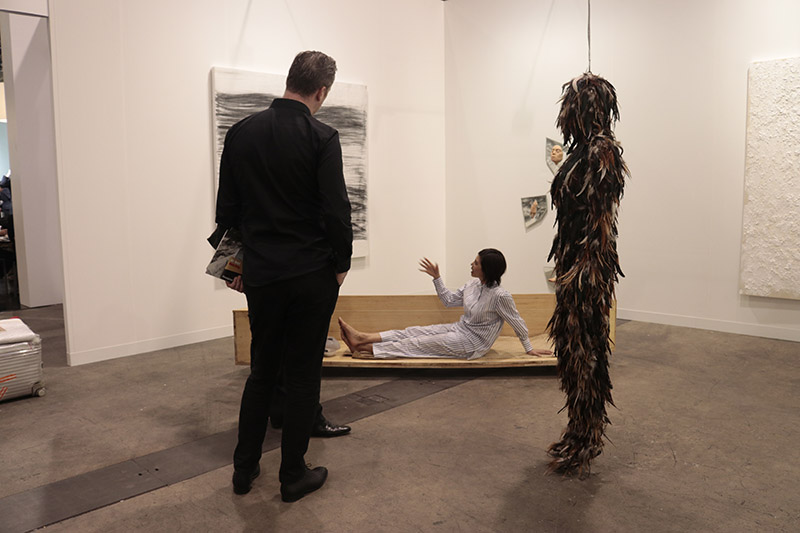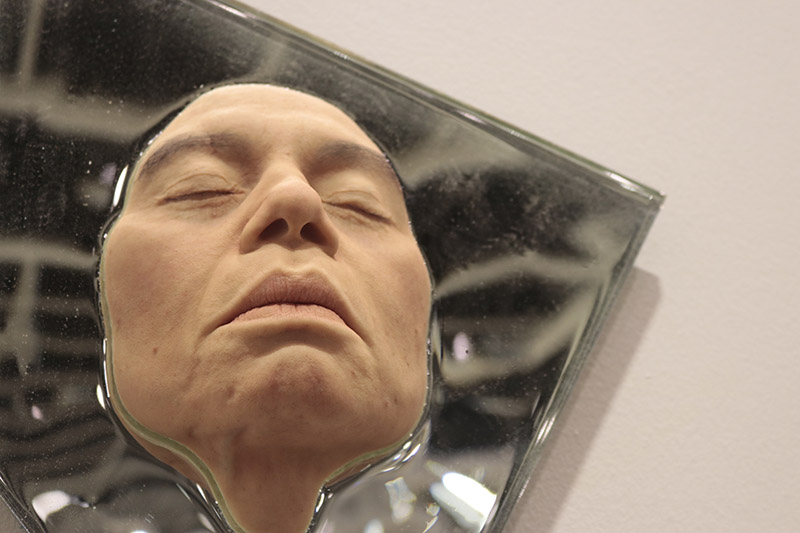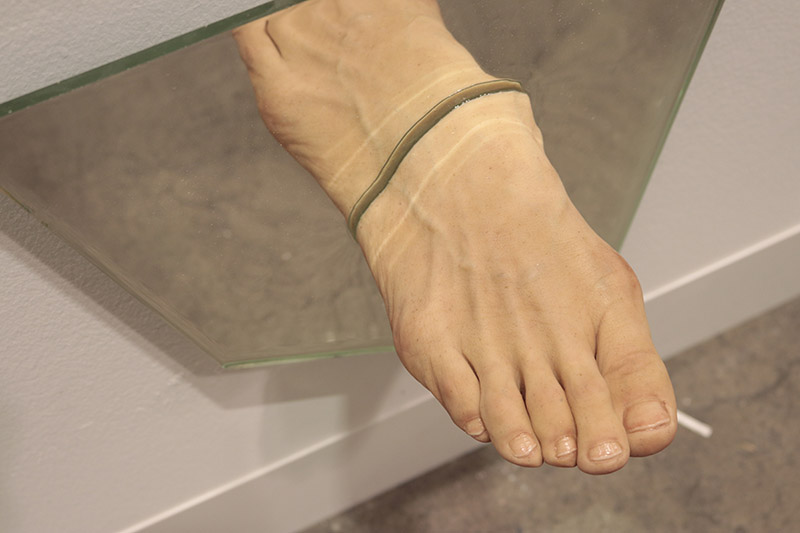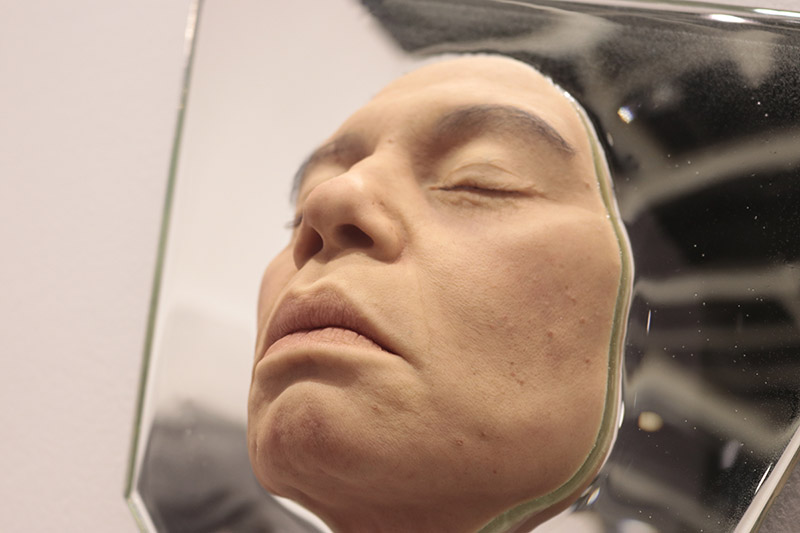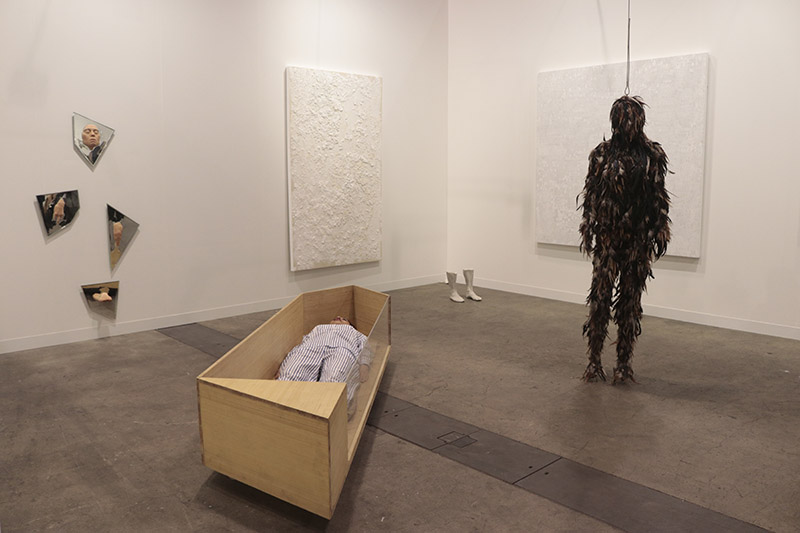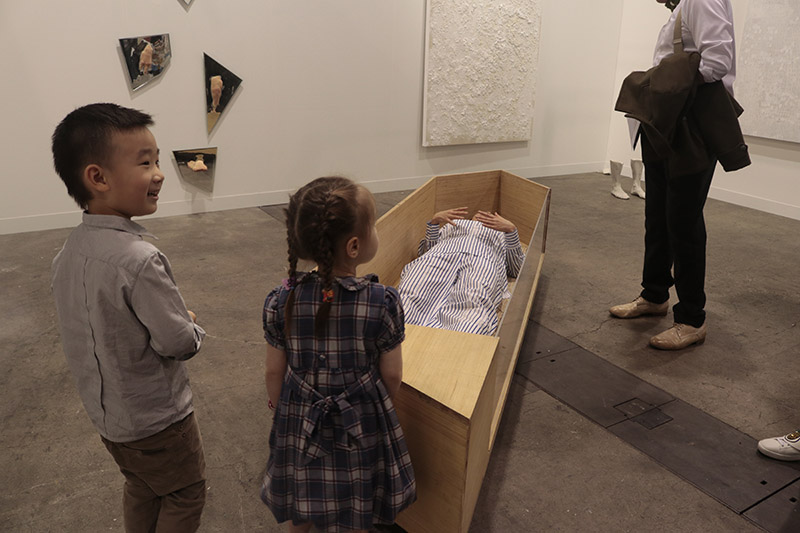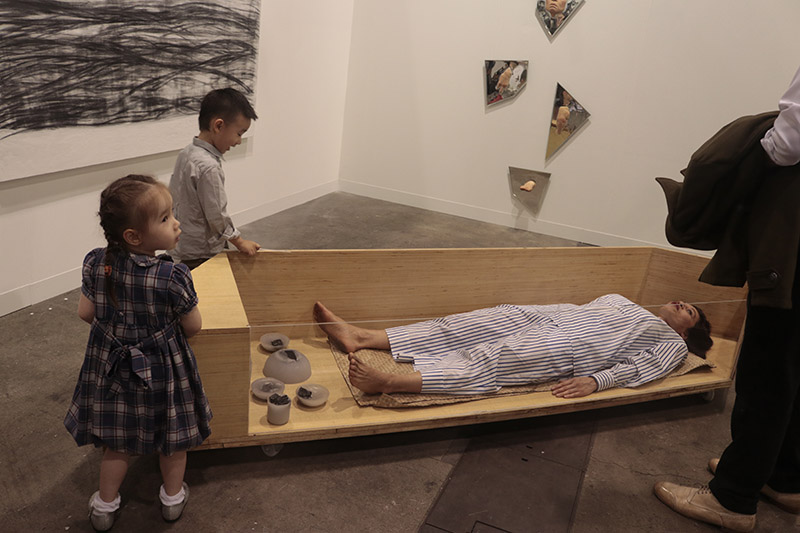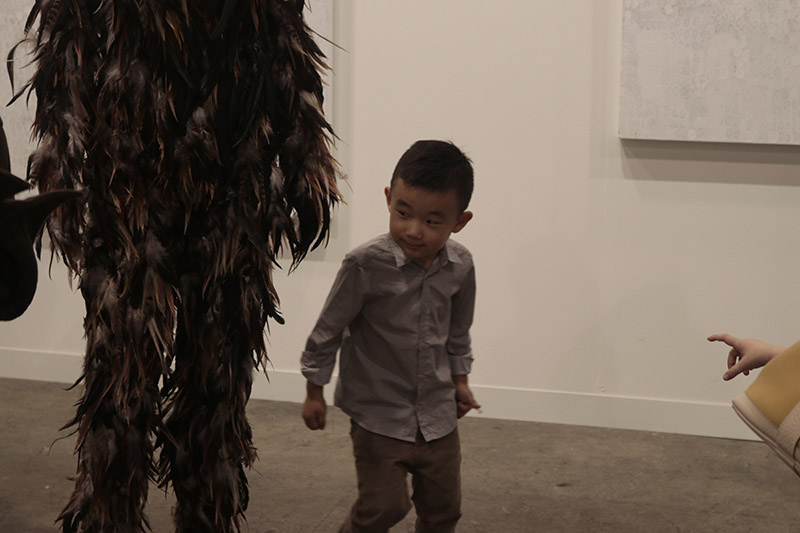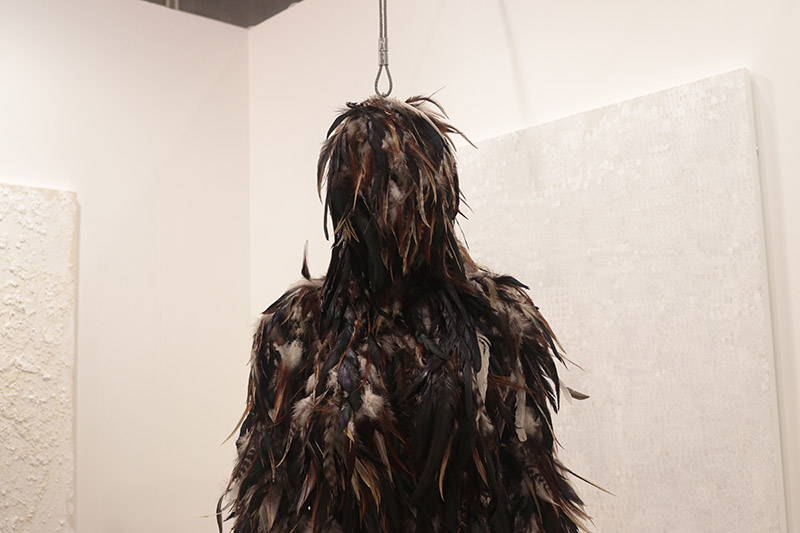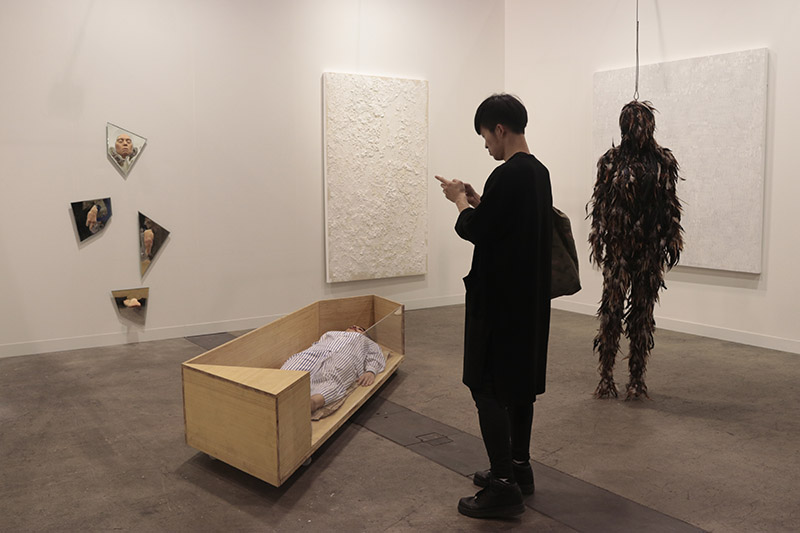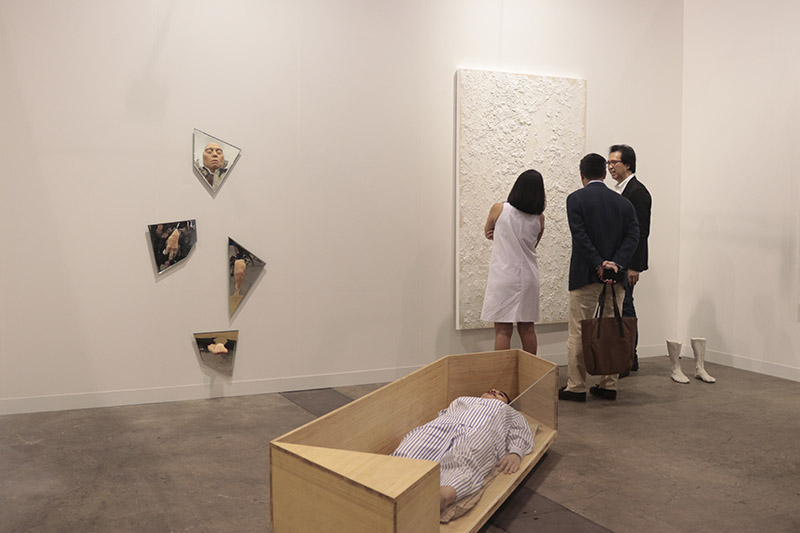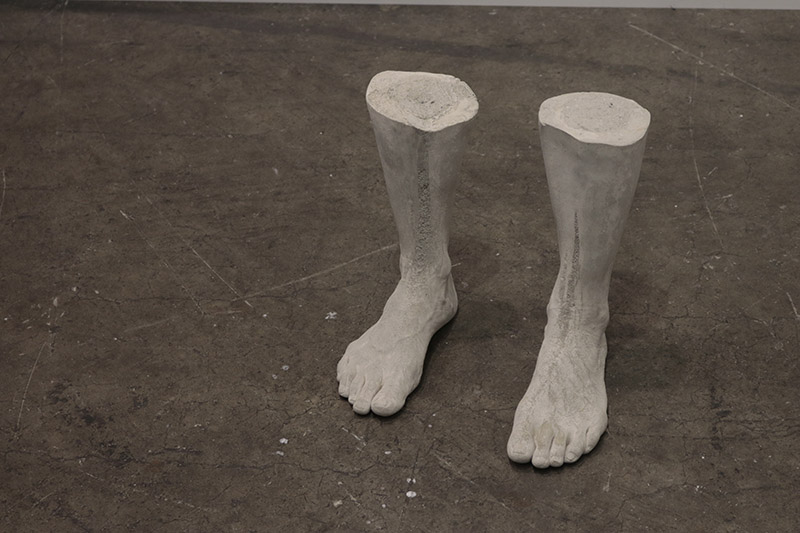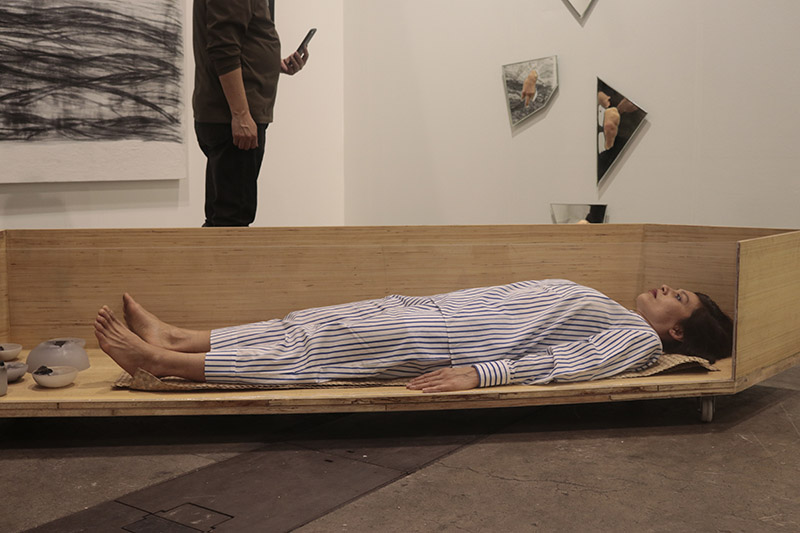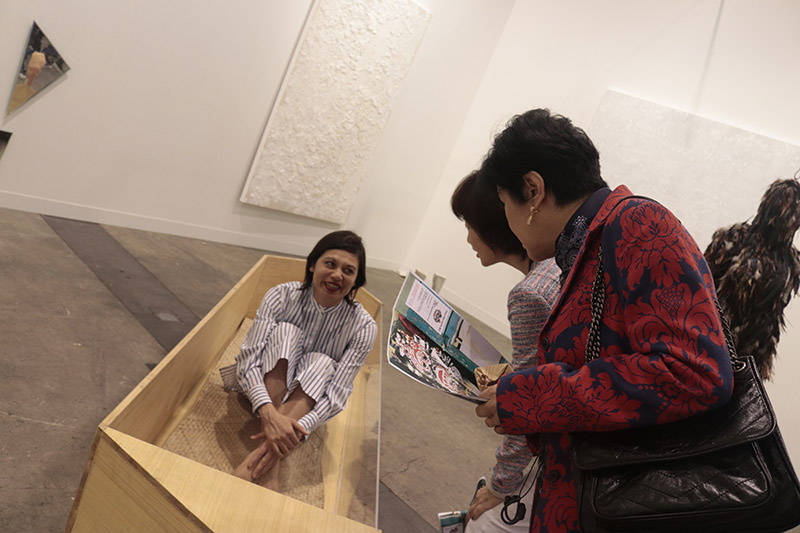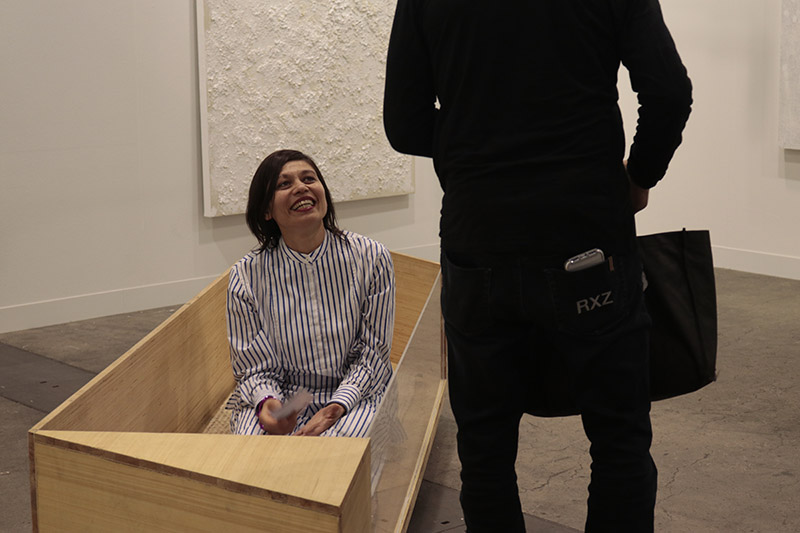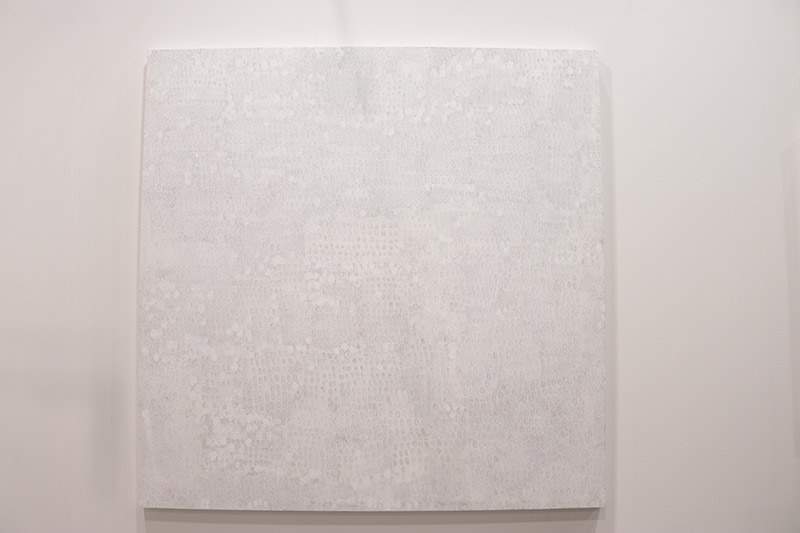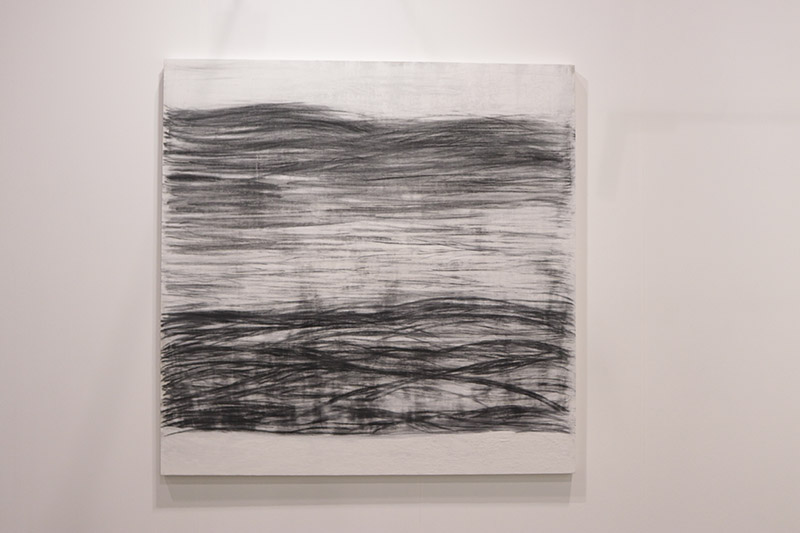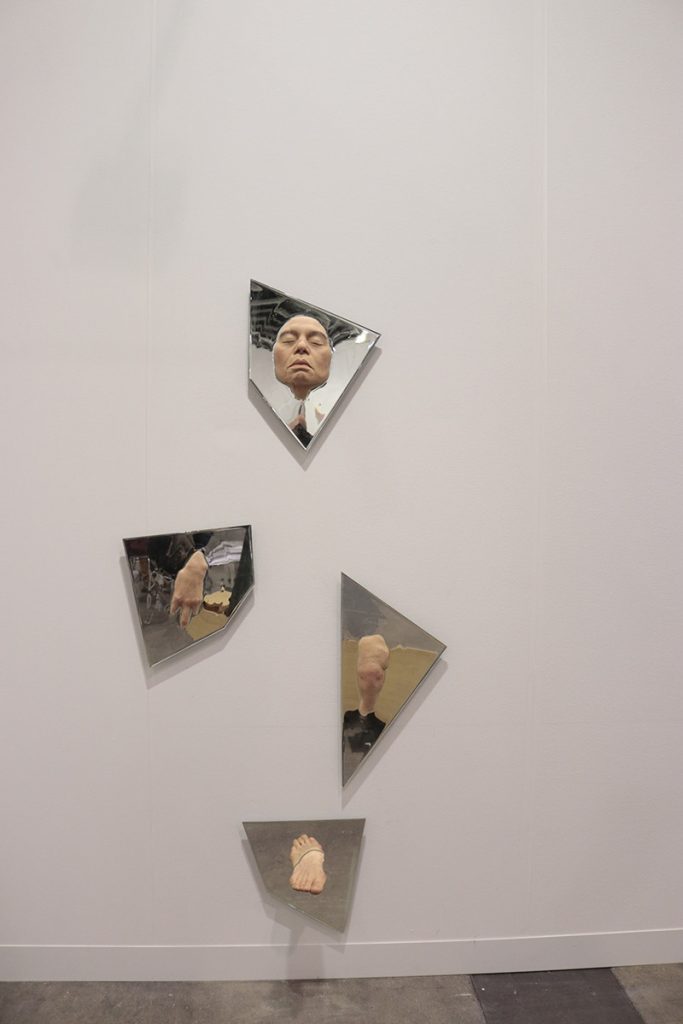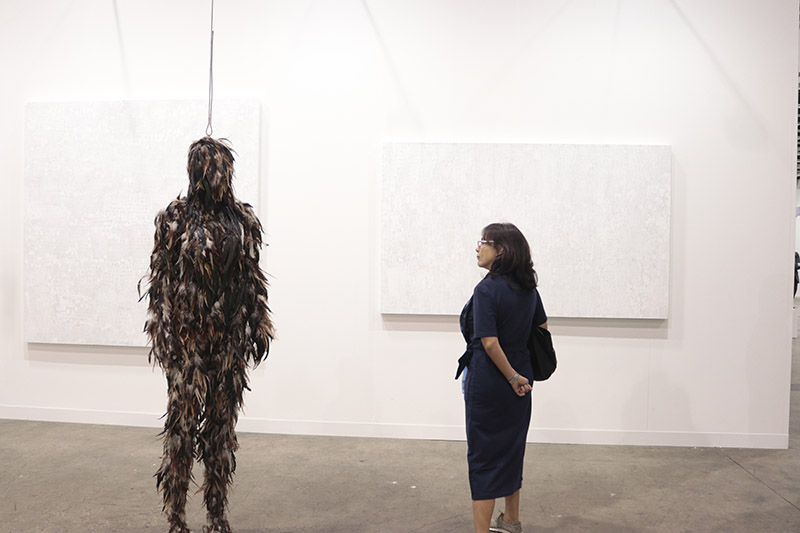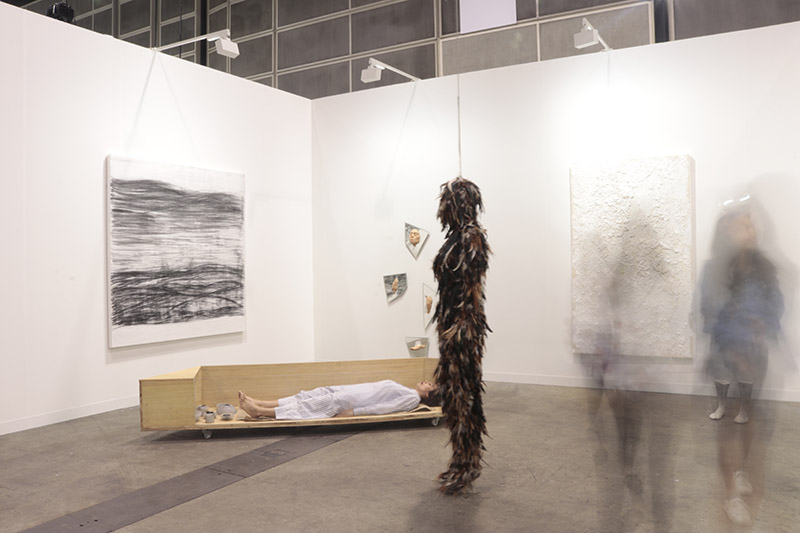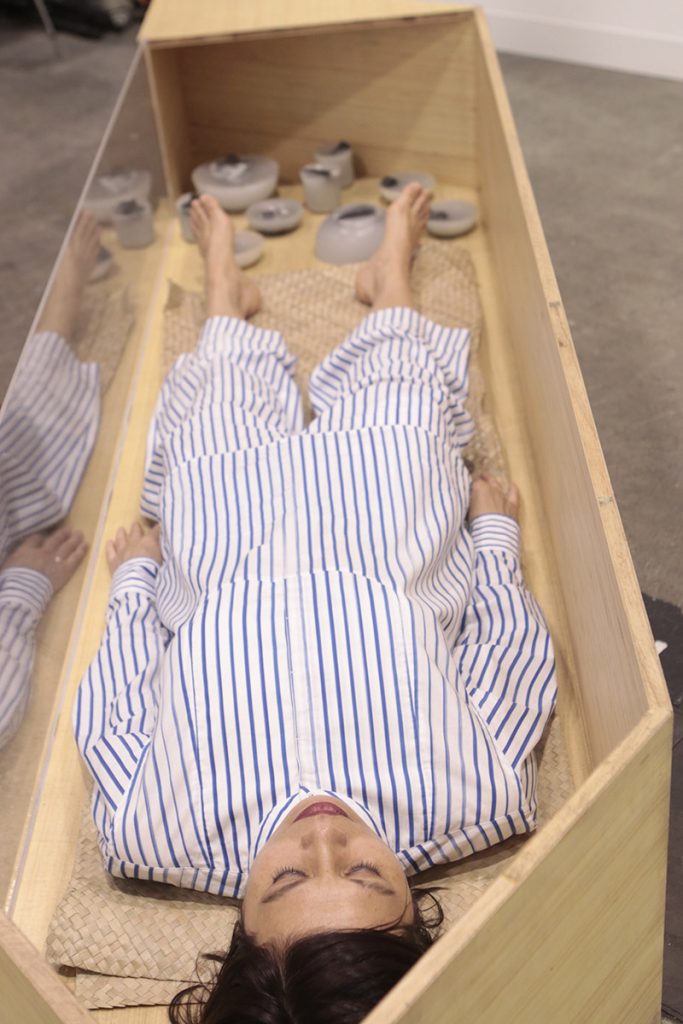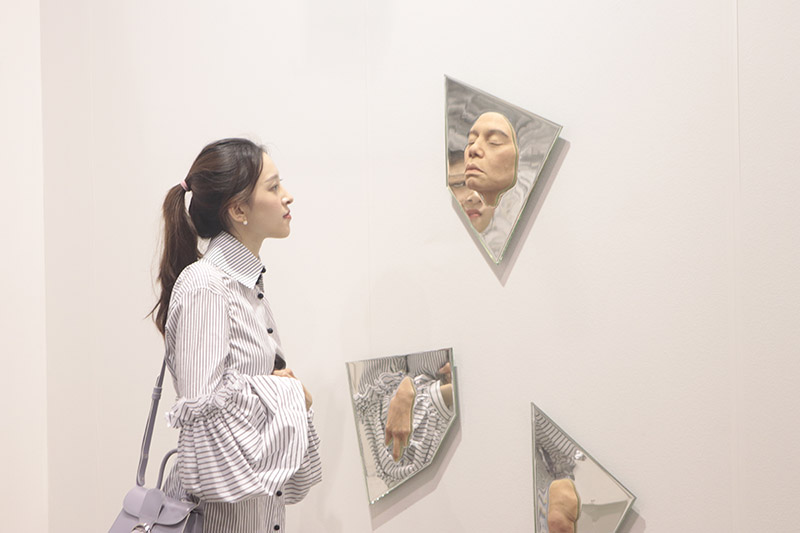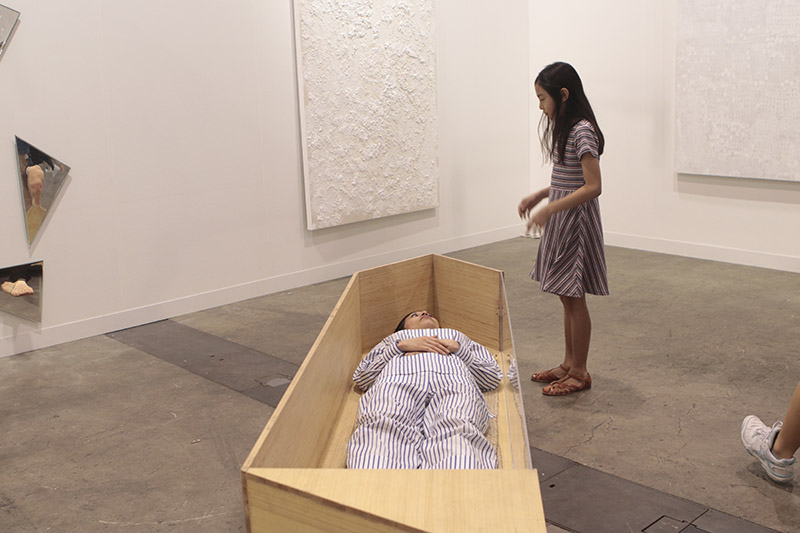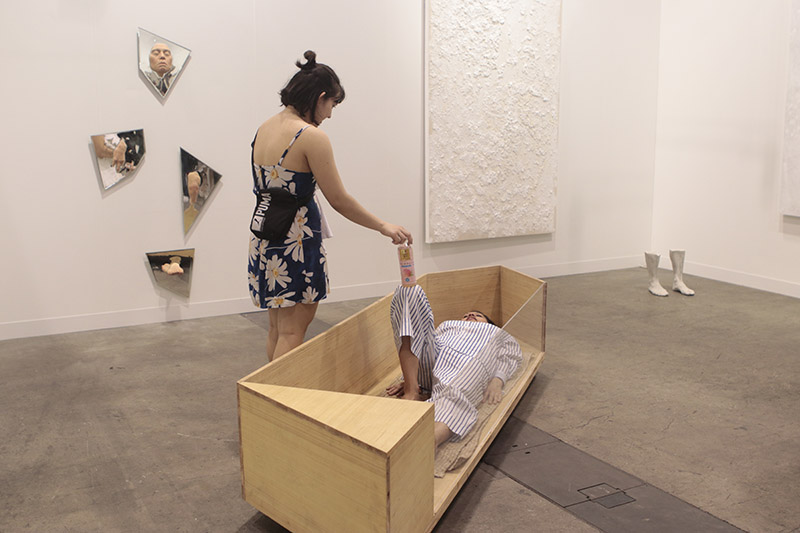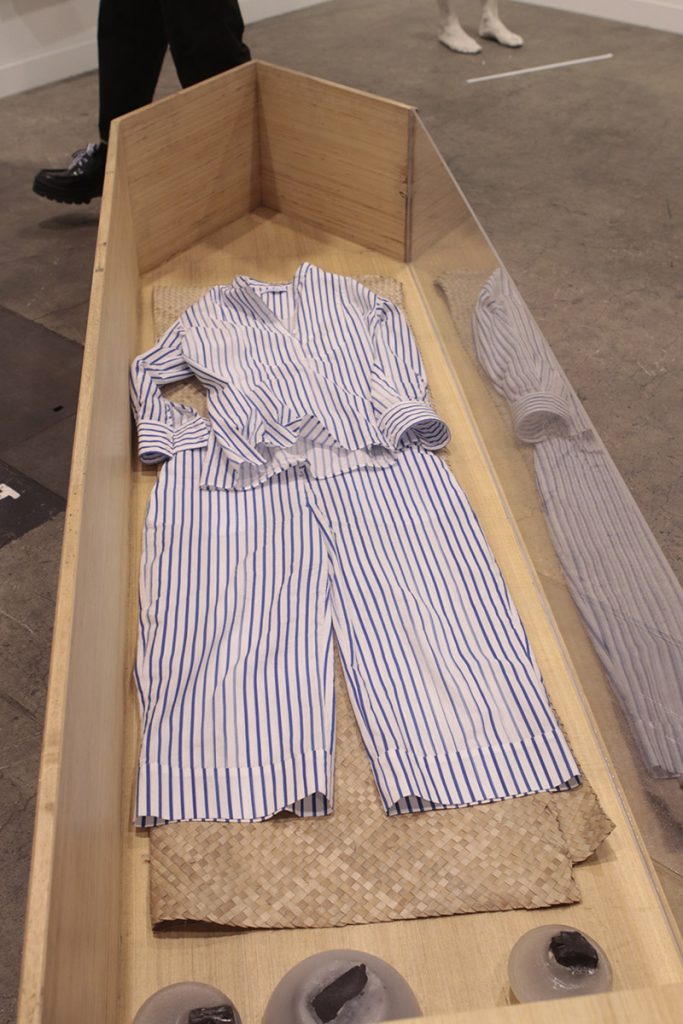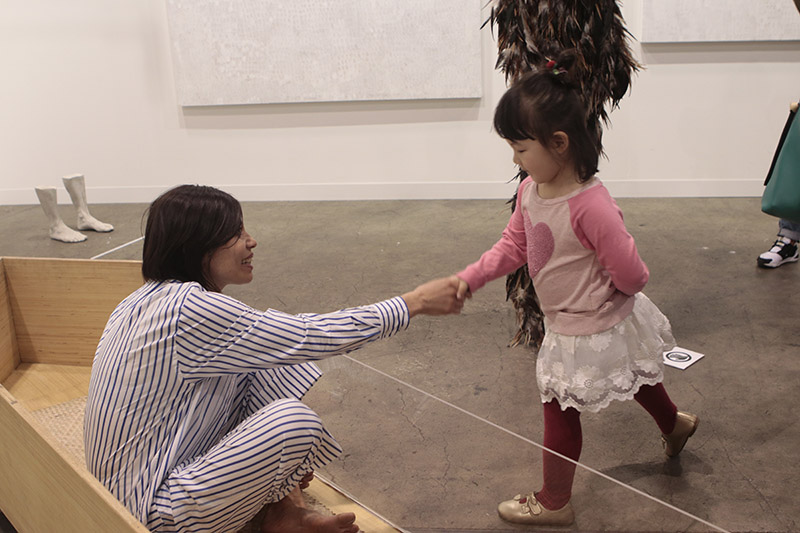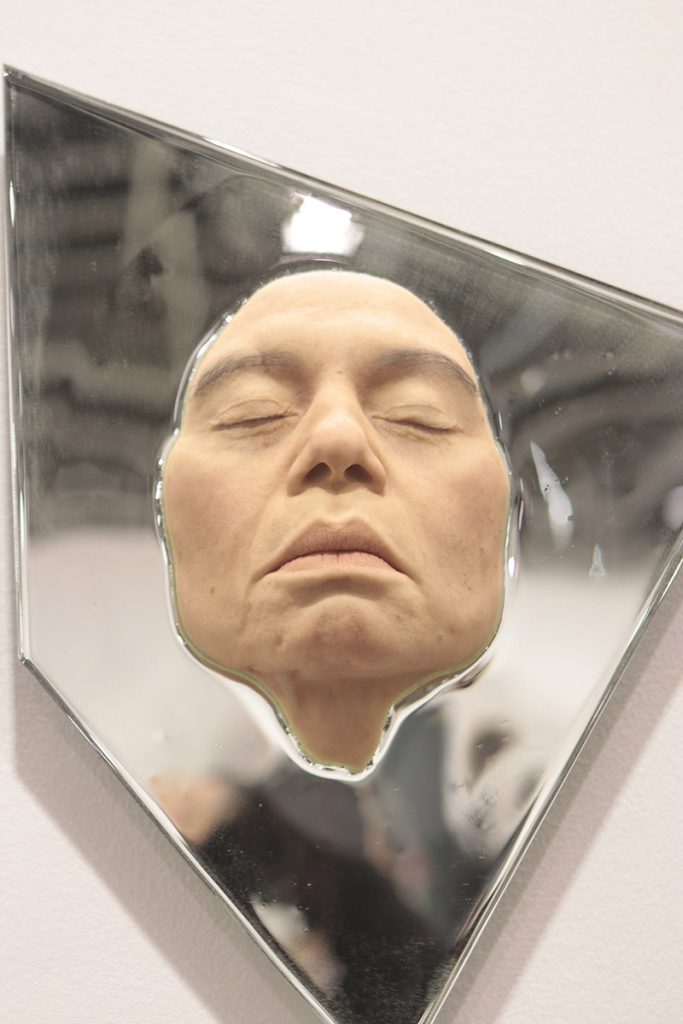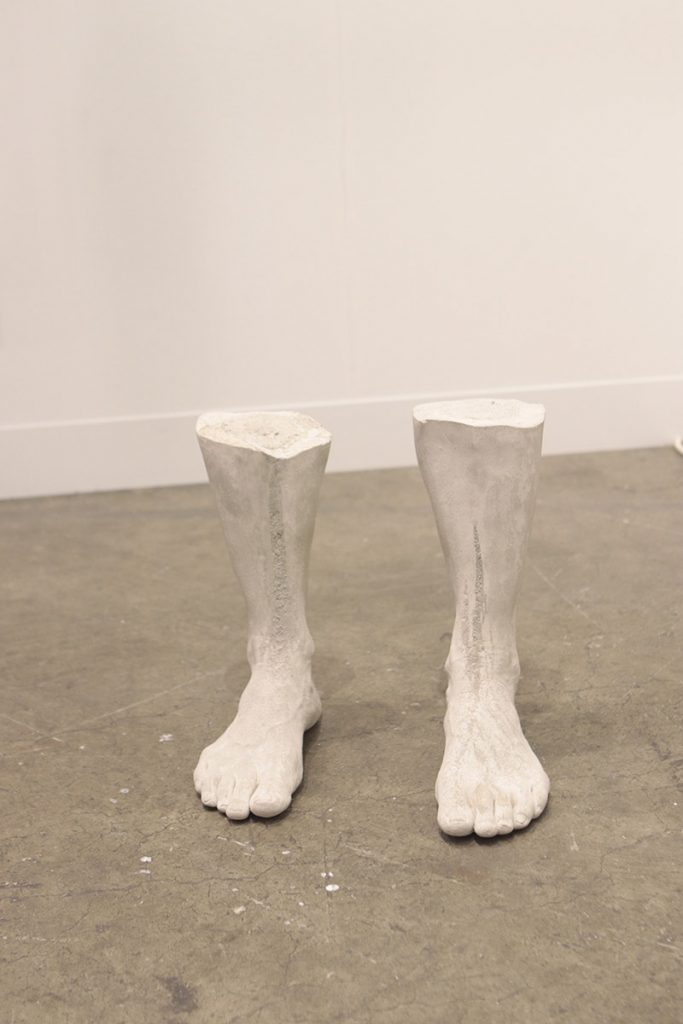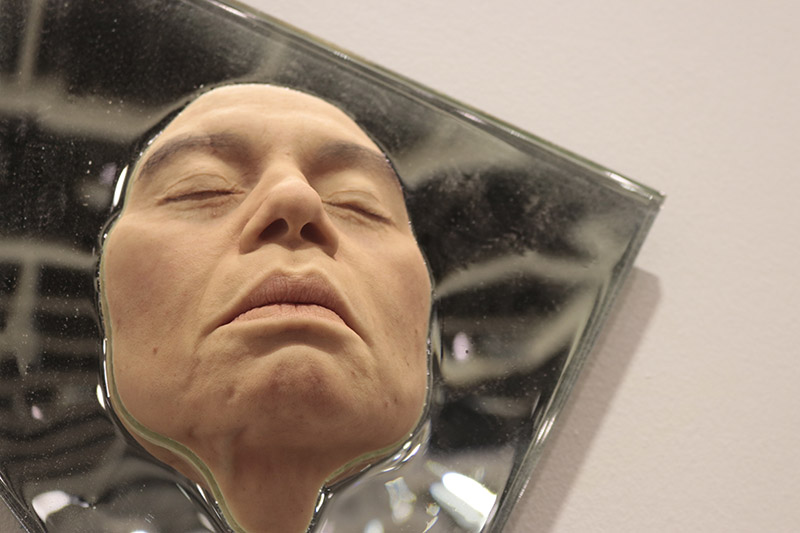
Art Basel Hong Kong, The Drawing Room Manila
Photos by Angela Dorio
Re- inventing Domesticity and the Decomposing of the Self
Read more below picture gallery.
Work list:
Title: Assimilation
Mannequin tarred and feathered
measure: 190 x 30 cm
Materials: tar, feathers, dummy
Title: Body Container
Wood, acrylic glass, mirror, silicone
Width: 65 X Depth: 40 X Length: 240 cm
Title: (Dis) Appearing
Mirror object: silicone live cast of body parts face, foot and knee
4 scattered pieces
Title: Life taken, Life given
Lahar feet: 26 X 26 X 15 cm weight: 5 Kg
Materials: Volcanic sand from Mt. Pinatubo, Philippines and live cast of feet
2) Exercise # 2 Routine # 2
Materials: Chalk, coconut oil, latex (acrylic paint)
Titles of canvases, size: 40X60 Inches/ 200 x 122 X 10 cm
1) Exercise # 1 Traces of an angel
materials: Salt, rubber latex
40X60 Inches: 200 x 122 X 10 cm
2) Exercise # 2 Routine # 2
materials: Chalk, coconut oil, latex (acrylic paint)
40X60 Inches: 200 x 122 X 10 cm
3) Exercise # 3 Merging North with South
materials: Coal, Chalk, water
40X60 Inches: 200 x 122 X 10 cm
2) Exercise # 2 Routine # 1
materials: Chalk, coconut oil, acrylic paint measure: 180X180X cm
3) Exercise # 3 Merging South with North
materials: Coal, chalk, water
Re- inventing Domesticity and the Decomposing of the Self
In a metropolis like Hong Kong, the average citizen lives in compromised space. Everyday life is a race. Every breath and movement is calculated into efficiency.
The art world is no stranger to this situation. On average, Lilibeth Cuenca Rasmussen spends merely fifty percent of her time at home. The remaining time is spent traveling in relation to her work. Many in the art world live this way, pursuing an almost nomadic life.
Referring to this contemporary lifestyle, the artist draws upon her work involving the body in “performativ” – in its presence and in its absence through representation or as a trace. Through objects, organic material, and performance, Re- inventing Domesticity and the Decomposing of the Self reflects on our transition from life to death. Organic materials such as wax, blood, and chalk accompany ritual in the representation and re-performance of making art and the artists in the studio. The exhibit uses these facets in representing the body, its narrative and life through performative gestures.
The sculpture, Body Container, is made in reference to domestic places: a house, a bed, a suitcase. It is a symbol of the domesticated body in the metropolis, a home and a mobile being. Its form is inspired by the ancient lime stone sarcophagus where the corpse decomposes quickly and cleanly, leaving ingredients such as calcium, salt, blood, gold, grease and coal inside. In her process, the artist seemingly gathers these ingredients and transforms them into paintings and objects – abstract representations of the body.
“When the reminiscent has left the body, the live body will be present.
As if the decomposition process has started inside the sarcophagus, the travelling body dissolves itself from inside the container.
After the journey, it will reconstruct itself, rise again as a representation of itself, a resurrection without the religious connotations.
The ingredients and remains will be transformed and translated into art objects and paintings. Other representations of the body are present as objects implementing a narrative layer: The punished and humiliated woman, tarred and feathered. Body parts exiting the mirror – a reflection becoming more real than reality. The feet of cement that has lost its connection to the earth.
